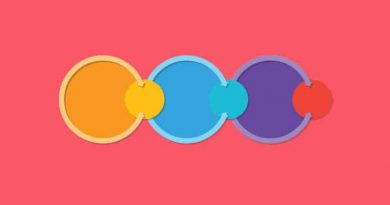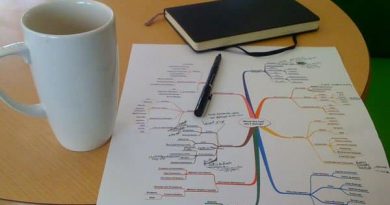Why Design Thinking Can Contribute to a Growing Business
Design thinking is defined by Tim Brown, CEO of IDEO, as “a discipline that uses the designer’s sensibility and methods to match people’s needs with what is technologically feasible and what a viable business strategy can convert into customer value and market opportunity.” Design thinking aims to achieve innovation and solve problems while putting the end consumer in the heart of the process. It is adopted by companies in order to increase the understanding of their consumers and the organization’s ability to create new ideas and achieve disruptive innovation. It encourages the building of an iterative process where ongoing improvement of the product or service is part of the production process. In a recent article by McKinsey & Company, “Building a design-driven culture,” Kilian, Sarrazin, and Yeon highlighted that companies need to embed experience design in the organization in order to engage with their consumers. This is viable through building a design-driven culture in the organization, which can be achieved through four main elements: really understanding the customer, bringing empathy to the organization, designing in real time, and acting quickly.
Design thinking is “a discipline that uses the designer’s sensibility and methods to match people’s needs with what is technologically feasible and what a viable business strategy can convert into customer value and market opportunity.” Tim Brown, CEO of IDEO
Various design thinking methods can be widely used during the ideation phase of the project. Implementing these methods vary based on the targeted output of the brainstorming session: problem solving, finding creative ideas, and evaluating ideas. While some ideas controversially claim that design thinking sessions are a waste of time in critical project stages, these thoughts reflect a lack of understanding of design thinking, how to run a successful design thinking session, and most importantly, choosing the proper method that fits with the target and project status. Obviously, it is not a wise decision to exclude a production stage such as ideation or quality control claiming it wastes project time. Many design thinking tools are designed to solve problems in critical time, such as the TRIZ and the 8D problem solving method developed by Ford Motor company in 1987.
In a comparative market, creativity innovation and technology play an essential role in improving the company’s position in the market and contributing to business growth, read this post about HTAP computing so you can give yourself an idea about how. However, innovation can’t be achieved using ordinary thinking methods, and here, design thinking can make the change, not only on the production level but also the internal organization’s environment. Design thinking can achieve business growth by having the following five factors:
Provides a Creative Environment
How many times have you finished a company meeting with a definite feeling that nothing would change? It becomes an obvious fact that majority of employees believe that meetings are boring, a waste of time, and sometimes frustrating. One of the reasons behind this negative image is either the meetings don’t actually solve anything – it turns into a chat session with no output, with the same words repeated again and again – or it can be replaced with an email to the whole company. However, the core problem of meetings is that they all use the same narrow method to think about ideas. Problems can hardly be solved using the same approach with which they were created, as was said by Albert Einstein:
“We can’t solve problems by using the same kind of thinking we used when we created them.” Albert Einstein
Design thinking methods approach the problem with different tools that can replace the flow of an ordinary meeting. Visually organizing ideas using mind maps can help stakeholders get the picture and scan facts using the same flow of ideas. Subsequently, better results can be predicted. During crisis times or tight deadlines, tools like the TRIZ can be used to choose a solution from 40 ideas predefined and proposed by the tool. While the design thinking session can provide a dramatic change in the meeting’s outcome, an experienced facilitator should run the meetings. Similar to ordinary meetings, managers should be able to handle this type of meeting in order to achieve outcomes in a short time. Hence, projects will be more able to achieve creativity without affecting the final project time.
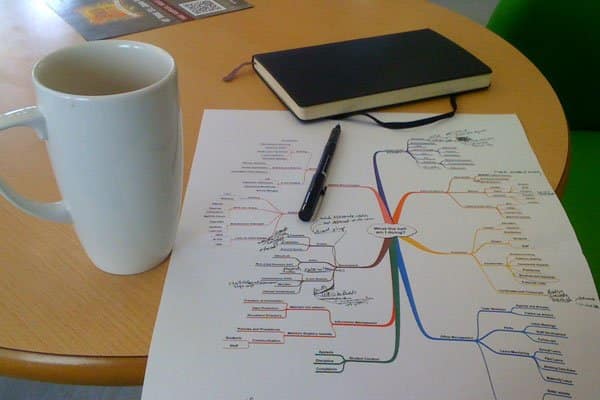
Aims to Research and Analyze the Whole Process
How design thinking methods approach problems ensures a wide scoop that covers the development stages. Usually, design thinking is implemented at an early stage of project development. While the collected data allows stockholders to understand consumer behavior, design thinking tools allow the team to organize the data to reflect it during the different development stages. After each session, the recommendation should be outlined in a form of an action plan that is handled by different departments in order to achieve the holistic stray behind each product. During its product development stages, IKEA developed a design strategy that ensured that products are in good form, user-friendly, eco-friendly, and at a reasonable price. This strategy is applied in different departments starting from choosing the raw materials. For example, product materials vary from mixed materials that reduce the consumption of earth resources while maintaining a low price for products, to expensive materials that meet some consumers’ expectations regardless of the price.

The ideation phase allows the team to build a better understanding of the product, consumer, and the internal processes in the company. The iterative nature of design thinking methods contributes to on-going improvement that reflects positively on the final product. After each production cycle, feedback is collected from both the team and consumers in order to achieve process improvement.
Focuses on Creativity and Innovation
The design thinking session depends on giving a chance for team members to share ideas and think outside the box in order to feel innovation and creativity. However, this requires facilitators to give freedom to team members during the meeting for a specific amount of time. The nature of this process contributes to increasing the innovative culture in the company and encourages members to share and contribute ideas. However, managers need to move between the following managerial types based on the project status:
- Directive (Autocratic): The manager gives the direction and expects immediate compliance from the team. It is suitable during a time of crisis and has less ability to build a creative environment.
- Authoritative: This type aims to provide long-term direction and strategy for the team. It is suitable when clear direction is required. The team is trained to handle tasks with a long-term approach. This type can be used to ensure long-term implementation of a creative strategy.
- Affiliative: This type focuses on the team and tends to build harmony between members through motivation and reduced conflict. This type can encourage creativity but its soft style may not be able to run the strategy in the long-term.
- Participate: This type considers the team’s input and shares in its decision making, which makes it suitable for fueling creativity and innovation in the company.
- Pacesetting: This type is highly objective and tends to do the tasks himself and expects employees to follow, which reduces the team’s ability to innovate.
- Coaching: This type aims to build long-term development for employees, which allows them to take part in the decision and build a high innovative profile.
Provides Methods and Tools to Solve Problems
When companies face problems, the team slips into a number of mistakes including panic, conflict, and mistakenly trying to solve the problem without analyzing the real causes behind it. Problem solving tools aim to analyze the problem in order to find the real causes behind it, which can be achieved using tools such as the Cause Effect diagram that allows the team to explore the different possible causes of the problem and prioritize it based on its impact on the problem. In complex problems that involve different departments, tools such as the 8D problem solving can be used in order to find quick solutions while researching a permanent long-term solution.
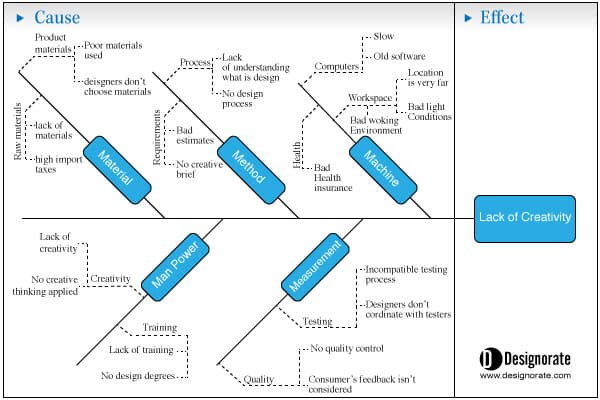
Builds a Human-Centered Process
The above implementation of the design thinking tools and methods aim to put the human being in the center of the process, either inside the company or as a consumer for the product. The methods starts with analyzing human behavior in the company and consumer feedback about the product, and uses the data to improve the final product in a way that meets the user’s needs and requirements. The human-centered design can be achieved by brainstorming seven main questions:
- Who is the consumer? Does the design reflect the user’s characteristics?
- What are the consumer’s goals in using the product?
- What is the consumer’s experience about the product?
- What are the goals of using this specific product or service?
- When and how does the consumer interact with the product design?
- How do the consumers think about the product or the design?
- Why does the consumer use this product or design?
Answering the above questions during the design thinking session allows the team to direct the product development strategy to a more user-friendly product, as seen in products made by IKEA, Lego, Apple, and more.
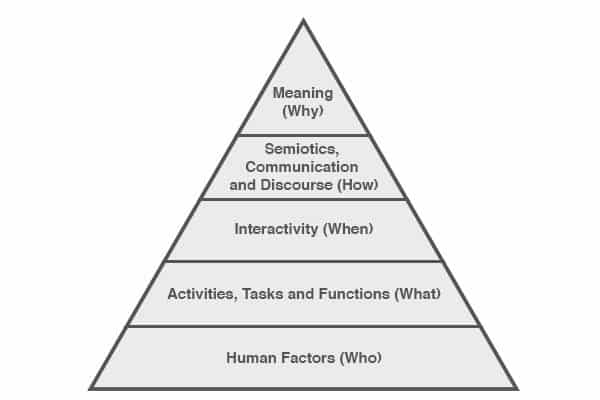
Design thinking can contribute to improving creativity and innovation in the company, and subsequently achieving market growth and a competent profile. However, a design thinking session should be handled professionally in order to ensure an accurate outcome that can achieve product success. Design thinking contributes to the company’s success on multiple levels, including building a creative environment, focusing on creativity and innovation, researching on the whole process, using efficient problem solving, and focusing on a human-centered design process.




